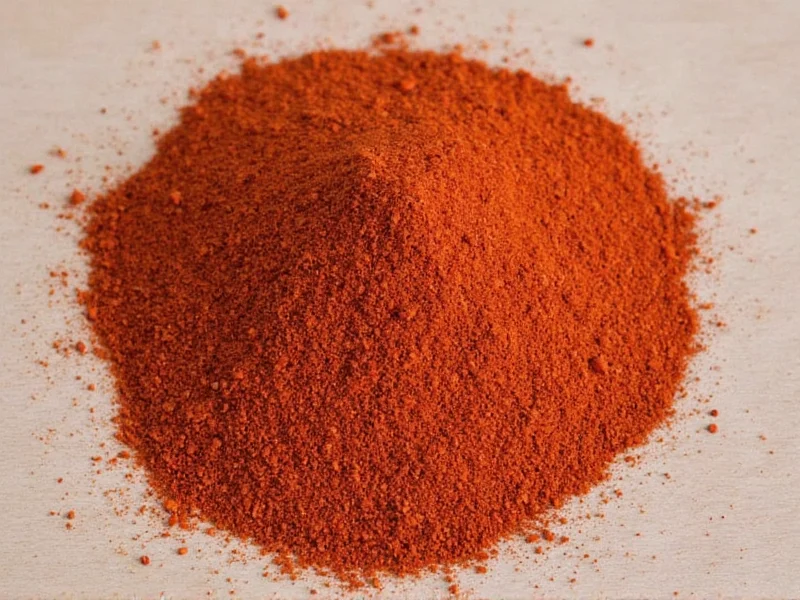When your recipe calls for bird's eye chilli but you're staring at an empty spice rack, knowing the right substitute can save your dish. These tiny but mighty peppers pack serious heat and distinctive flavor that's essential in Southeast Asian cuisine. Understanding proper substitutions requires examining both heat levels and flavor profiles to maintain your dish's integrity.
Understanding Bird's Eye Chilli Characteristics
Bird's eye chilli, also known as Thai bird's beak or prik kee noo, typically measures between 50,000-100,000 Scoville Heat Units (SHU). These small peppers deliver intense heat with subtle fruity undertones that distinguish them from other hot peppers. Their thin walls make them ideal for quick pickling and their compact size allows for even heat distribution in sauces and stir-fries.
When seeking bird's eye chilli alternatives, consider both the heat measurement and flavor profile. The best substitutes maintain a balance between sufficient spiciness and complementary flavor notes that won't overpower your dish. Regional availability often determines which substitutes work best for home cooks worldwide.
Fresh Pepper Substitutes Compared
For immediate cooking needs, fresh pepper alternatives provide the closest experience to authentic bird's eye chilli. The following table compares viable fresh substitutes with precise substitution ratios:
| Pepper Variety | Scoville Range (SHU) | Flavor Profile | Substitution Ratio |
|---|---|---|---|
| Bird's Eye Chilli (reference) | 50,000-100,000 | Sharp, fruity, floral | 1:1 |
| Serrano | 10,000-23,000 | Grassy, bright | 2:1 |
| Cayenne | 30,000-50,000 | Earthy, slightly sweet | 1:1 |
| Red Thai Chilli | 50,000-100,000 | Nearly identical to bird's eye | 1:1 |
| Jalapeño | 2,500-8,000 | Grassy, vegetal | 3:1 |
| Habanero | 100,000-350,000 | Fruity, citrusy | 1:3 |
Fresh Pepper Substitution Guide
Serrano peppers serve as the most accessible bird's eye chilli substitute in Western supermarkets. Though milder, their similar shape and texture work well in Thai and Vietnamese dishes. Use two serranos for every one bird's eye chilli called for in your recipe. Remove seeds and membranes from serranos to better match bird's eye heat distribution.
Cayenne peppers provide the closest heat match among commonly available options. Their elongated shape resembles mature red bird's eye chillies, making them visually appropriate for many dishes. When substituting cayenne for bird's eye chilli, maintain a 1:1 ratio but consider removing some seeds if your cayenne variety runs particularly hot.
For authentic Southeast Asian cooking, seek out red Thai chillies at Asian markets. These are essentially mature bird's eye chillies and can replace them in a 1:1 ratio without altering your dish's flavor profile. Their identical heat level and flavor make them the ideal substitute when available.
Dried and Powdered Alternatives
When fresh peppers aren't accessible, dried alternatives offer convenient bird's eye chilli substitutes. Crushed red pepper flakes provide adjustable heat levels—start with half the amount called for and adjust to taste. For Thai curry pastes, incorporate flakes during the oil-frying stage to release maximum flavor.
Gochugaru, Korean red pepper flakes, works surprisingly well as a bird's eye chilli substitute in certain applications. While milder (4,000-8,000 SHU), its complex flavor profile adds depth to Southeast Asian dishes. Use a 2:1 ratio of gochugaru to bird's eye chilli, adding it early in the cooking process to develop flavors.
Cayenne powder serves as a reliable pantry staple substitute. Measure carefully—1/8 teaspoon cayenne powder equals approximately one fresh bird's eye chilli. Add powdered substitutes gradually, allowing five minutes between additions for heat to fully develop in your dish.
Regional Substitution Strategies
Your location significantly impacts which bird's eye chilli substitutes work best. In North America, serranos and cayennes dominate supermarket produce sections, making them practical first choices. European cooks often find jalapeños more readily available, requiring careful ratio adjustments to match bird's eye heat.
Asian markets worldwide typically stock fresh Thai chillies, making them the superior substitute where accessible. In regions where even these are unavailable, consider growing your own bird's eye plants—they thrive in containers and produce abundant harvests with minimal space requirements.
Tropical climates offer unique alternatives like malagueta peppers in Brazil or piri piri in Africa, which share similar heat profiles. When traveling or living abroad, consult local cooks about regional peppers that serve as traditional bird's eye chilli substitutes in that area's cuisine.
Advanced Substitution Techniques
Professional chefs employ several techniques when perfect bird's eye chilli substitutes aren't available. Combine milder peppers with a touch of pure capsaicin extract to precisely match heat levels without altering flavor. For example, blend jalapeño with a tiny pinch of extract to achieve bird's eye intensity while maintaining grassy notes.
Consider the dish's cooking method when selecting substitutes. For raw applications like salads or dipping sauces, prioritize flavor matching over exact heat measurement. In long-simmered curries, choose substitutes with heat that withstands prolonged cooking—dried options often perform better than fresh in these applications.
When substituting in fermented foods like Thai prik nam pla, maintain the same pepper-to-liquid ratio but adjust fermentation time based on substitute heat levels. Stronger substitutes may require shorter fermentation to prevent overwhelming heat development.
Storage and Preparation Tips
Proper storage extends the usability of your bird's eye chilli substitutes. Freeze whole peppers in airtight containers for up to six months—frozen serranos maintain texture better than jalapeños when thawed. For quick access, pre-chop substitutes and freeze in ice cube trays with oil, then transfer to bags for recipe-ready portions.
When preparing substitutes, remember that heat concentrates in the seeds and white membranes. For milder substitutes like jalapeños, include more of these parts; for hotter options like habaneros, remove them completely. Wear gloves when handling any hot pepper substitutes to prevent skin irritation.
Dried alternatives require different preparation. Rehydrate crushed peppers in warm broth for 15 minutes before using in sauces. For powdered substitutes, bloom in hot oil for 30 seconds to maximize flavor release before adding to your dish—this technique particularly enhances cayenne's performance as a bird's eye chilli alternative.











 浙公网安备
33010002000092号
浙公网安备
33010002000092号 浙B2-20120091-4
浙B2-20120091-4